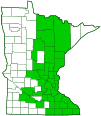great St. Johnswort
(Hypericum ascyron ssp. pyramidatum)
Conservation • Wetland • Description • Habitat • Ecology • Use • Distribution • Taxonomy
Description |
Great St. Johnswort is a showy, mid-summer wildflower. It occurs in the northeastern United States from Maine to Minnesota, south to New Jersey and Missouri, and in southern Ontario and Quebec Canada. Within this range it is common, but for an unknown reason large populations are seldom found. It is speculated that the wide distribution of small populations is due to dispersal by Native Americans, who may have eaten its fruits. In Minnesota it is common in the eastern half of the state and mostly absent from the western half. It is found in moist areas, including in woodland openings, moist meadows and thickets, river-bottom prairies, ravines in upland prairies, and fens; on the banks of rivers and streams; and in roadside ditches. It grows under full sun to light shade in a variety of soil conditions. It blooms in Minnesota in July and August. Great St. Johnswort is an erect, perennial forb, rising on a single stem or more often on 2 or more stems from a somewhat woody base. The base sometimes develops short, horizontal, underground stems (rhizomes). The plant can be 20″ to 78″ (50 to 200 cm) tall but is usually no more than 52″ (130 cm) in height. The stems are hairless; erect or curve up at the base (ascending); unbranched on the lower two-thirds and often branched near the top; and green, sometimes tinged with red. The upper part of the stem is four-angled and slightly ridged or narrowly winged below each leaf. On older plants the surface of the upper stem often peels in thin strips. The leaves are opposite, stalkless, 1 9⁄16″ to 3⅜″ (40 to 85 mm) long, and 11⁄16″ to 1 7⁄16″ (18 to 37 mm) wide. The leaf blade is mostly narrowly oval and widest at the middle (elliptic) or below the middle (ovate), sometimes lance-shaped. It is shallowly heart-shaped at the base, often somewhat surrounding (clasping) the stem, and tapers to a bluntly pointed or rounded tip. There is a single main vein, visible on the lower half of the blade, and 4 to 7 pairs of lateral veins. The smallest (tertiary) veins form a dense network. There are no black dots, lines, or streaks, but there are usually pale to yellowish-brown dots visible. The upper surface is medium green, hairless, and sometimes has a whitish, waxy coating (glaucous). The lower surface is pale green and hairless. The margins are flat and untoothed. The inflorescence is a single flower or a flat-topped to rounded cluster (cyme) of 2 to 5 flowers at the end of the stem and each branch. A single plant can have up to 35 flowers. Each flower is 1 3⁄16″ to 2¾″ (30 to 80 mm) in diameter and is on a stalk (pedicel) that is no more than ½″ (13 mm) long, rather short relative to the size of the flower. The pedicel lengthens in fruit, becoming up to 1 3⁄16″ (30 mm) long. There are 5 sepals, 5 petals, about 120 to 160 stamens, and 5 styles. The sepals are green, oblong lance-shaped to narrowly egg-shaped, 5⁄16″ to ½″ (8 to 13 mm) long, and 3⁄16″ to ¼″ (5 to 6 mm) wide. They do not have noticeable yellowish-brown or black dots, lines, or streaks. The petals are bright yellow, widely spreading, narrowly to broadly oval and widest near the tip (obovate), 1″ to 1 9⁄16″ (25 to 40 mm) long, and about ¾″ (20 mm) wide. They often develop white streaks as they age. The stamens are fused near the base of their stalks (filaments) into 5 groups of about 30 each. The filaments and anthers are yellow. The pistil is light green. The styles are united for most of their length, separated just at the tip. The stigmas are cap-like. The fruit is an egg-shaped, ⅜″ to 1 3⁄16″ (9 to 30 mm) long, 3⁄16″ to ½″ (5 to 13 mm) wide capsule with 5 cells and numerous seeds. The capsule is egg-shaped, widest near the base and tapered to a short beak. The seeds are oblong, flattened, and black when mature. |
Height |
20″ to 78″ (50 to 200 cm) |
Flower Color |
Bright yellow |
Similar Species |
Habitat |
Moist. Woodland openings, moist meadows and thickets, river-bottom prairies, ravines in upland prairies, fens, the banks of rivers and streams, and roadside ditches. Full sun to light shade. |
Ecology |
Flowering |
July and August The flowers are pollinated mostly by bumblebees. |
Pests and Diseases |
|
Use |
|
Distribution |
||
|
Sources |
|
| 2/3/2025 | ||
Nativity |
||
Native |
||
Occurrence |
||
|
||
Taxonomy |
|
Kingdom |
|
Subkingdom |
Pteridobiotina |
Phylum |
Tracheophyta (Vascular Plants) |
Class |
|
Order |
Malpighiales (Nances, Willows, and Allies) |
Family |
Hyperiaceae (St. John’s wort) |
Tribe |
Hypericeae (St. John’s worts) |
Genus |
Hypericum (St. John’s worts) |
Section |
Roscyna |
Species |
Hypericum ascyron (great St. Johnswort) |
There are three subspecies of Hypericum ascyron. Two are native to Asia and do not occur in North America. Only one, H. a. ssp. pyramidatum, is native to North America. |
|
Subordinate Taxa |
|
|
|
Synonyms |
|
Hypericum pyramidatum |
|
Common Names |
|
American great St. Johnswort giant St. Johnswort great St. Johnswort |
|
Glossary
Clasping
Describing a leaf that wholly or partly surrounds the stem but does not fuse at the base.
Cyme
A branched, flat-topped or convex flower cluster in which the terminal flower opens first and the outermost flowers open last.
Elliptic
Narrowly oval, broadest at the middle, narrower at both ends, with the ends being equal.
Filament
On plants: The thread-like stalk of a stamen which supports the anther. On Lepidoptera: One of a pair of long, thin, fleshy extensions extending from the thorax, and sometimes also from the abdomen, of a caterpillar.
Obovate
Inversely egg-shaped, with the attachment at the narrower end.
Pedicel
On plants: the stalk of a single flower in a cluster of flowers. On insects: the second segment of the antennae. On Hymenoptera and Araneae: the narrow stalk connecting the thorax to the abdomen: the preferred term is petiole.
Rhizome
A horizontal, usually underground stem. It serves as a reproductive structure, producing roots below and shoots above at the nodes.
Visitor Photos |
||
Share your photo of this plant. |
||
This button not working for you? |
||
Nancy Falkum |
||
 |
 |
|
Greg Watson |
||
Hypericum ascyron I attached two pictures of Great St. Johnswort. I submitted the two pictures to Minnesota Wildflowers, Hypericum ascyron (Great St. Johnswort): Minnesota Wildflowers, and they agreed it was Hypericum ascyron. The pictures were taken along the Wagon Wheel Trail in La Crescent. |
||
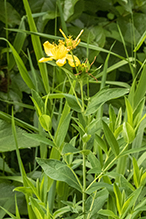 |
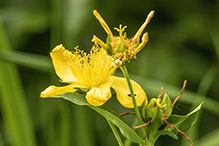 |
|
MinnesotaSeasons.com Photos |
||
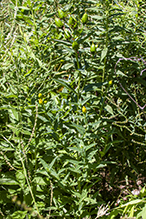 |
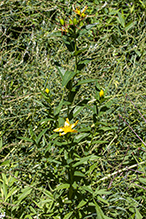 |
|
Plant |
Plant |
|
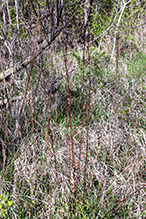 |
||
Plant in late season |
||
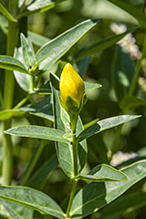 |
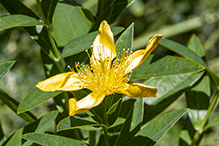 |
|
Inflorescence |
Flower |
|
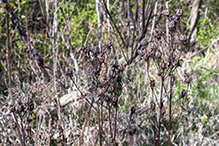 |
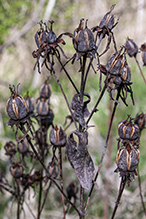 |
|
Infructescence |
||
|
||
|
||
|
Infructescence |
|
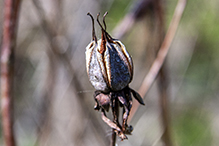 |
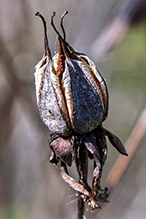
|
|
Seed capsule |
||
|
||
|
||
|
Seed capsule |

Slideshows |
|

Visitor Videos |
||
Share your video of this plant. |
||
This button not working for you? |
||
|
Other Videos |
||
|

Visitor Sightings |
||
Report a sighting of this plant. |
||
This button not working for you? |
||
Nancy Falkum |
Location: Oronoco Prairie SNA |
 |
| Greg Watson 7/10/2021 |
Location: Eagles Bluff Park, La Crescent, MN I took these two pictures of a Jagged Ambush Bug at Eagles Bluff Park in La Crescent, MN on 9 September 2021. |
MinnesotaSeasons.com Sightings |
||

Created: 9/15/2021 Last Updated: © MinnesotaSeasons.com. All rights reserved. |
